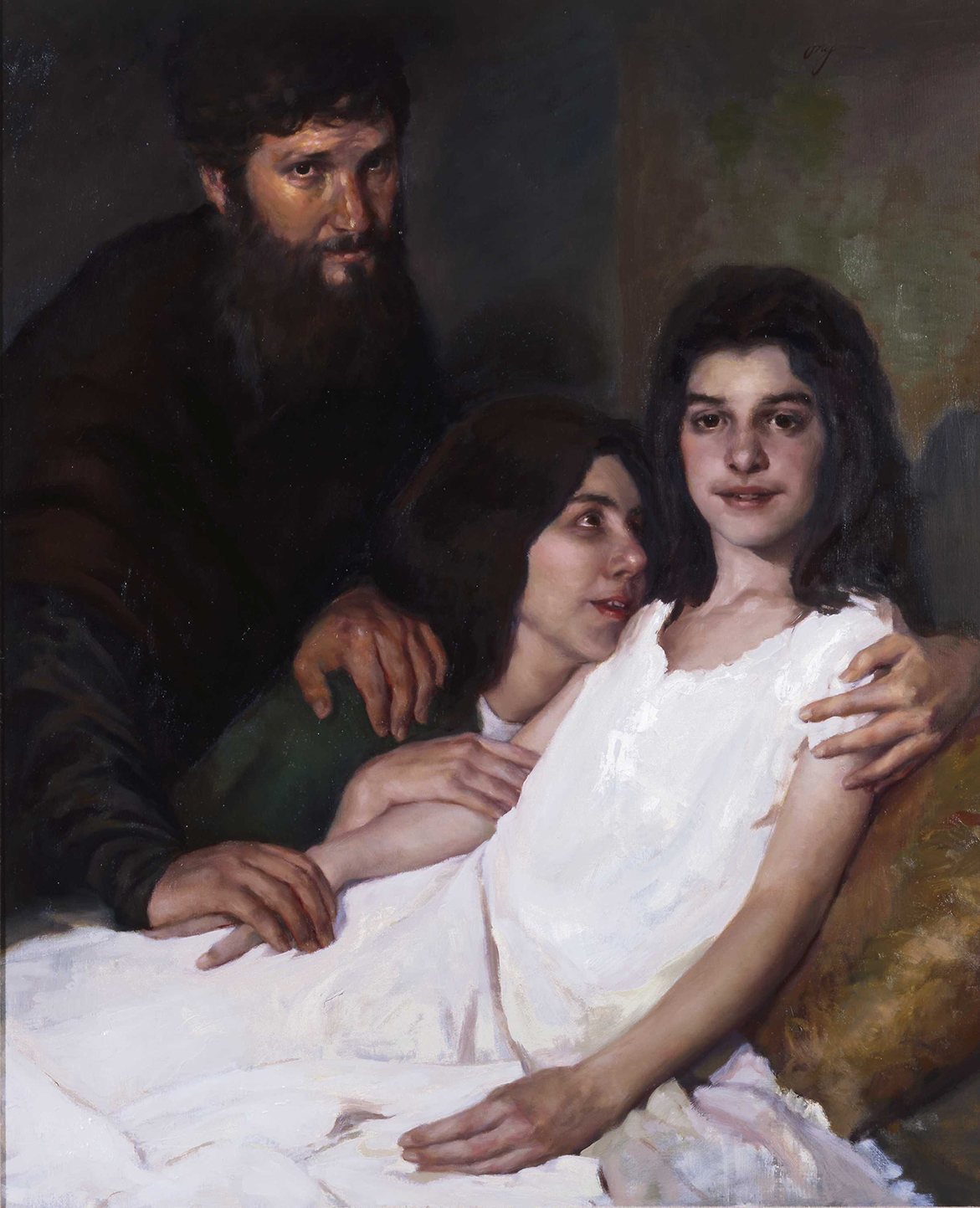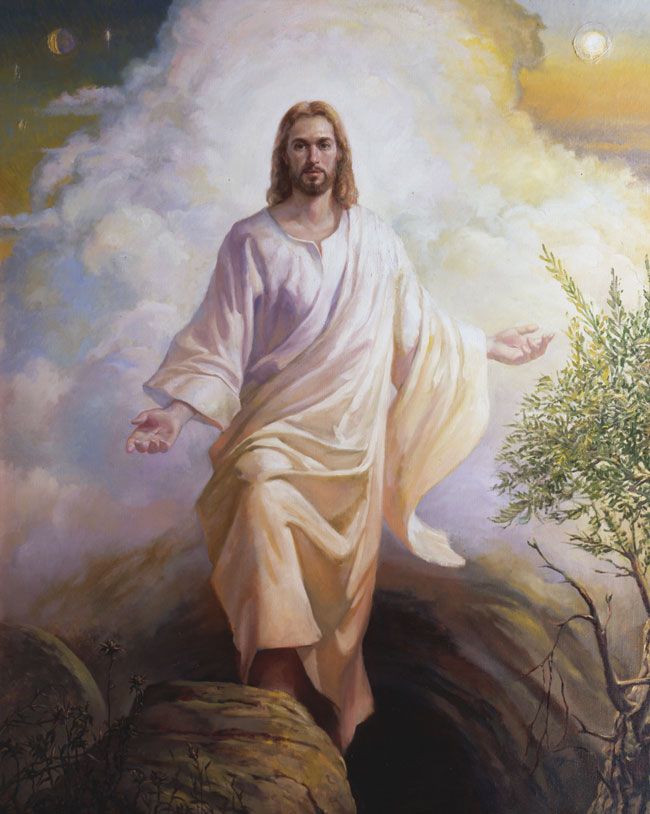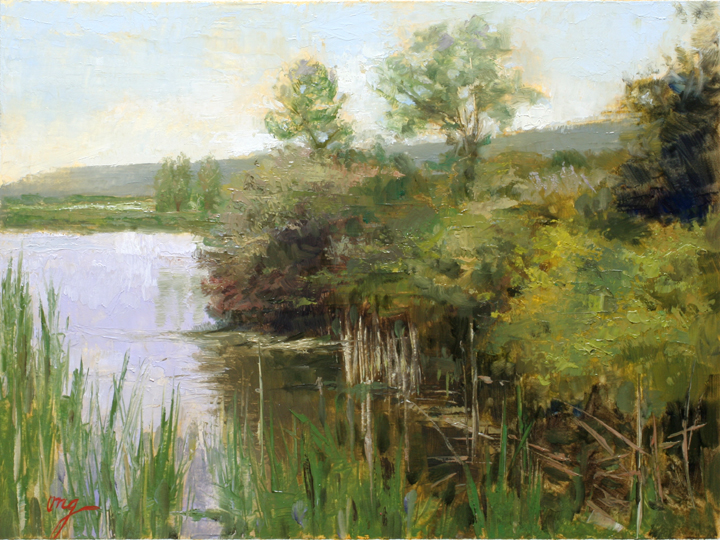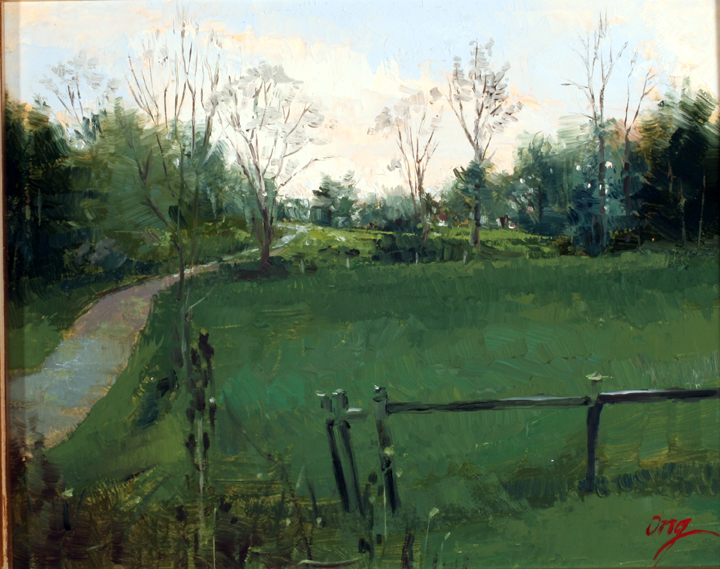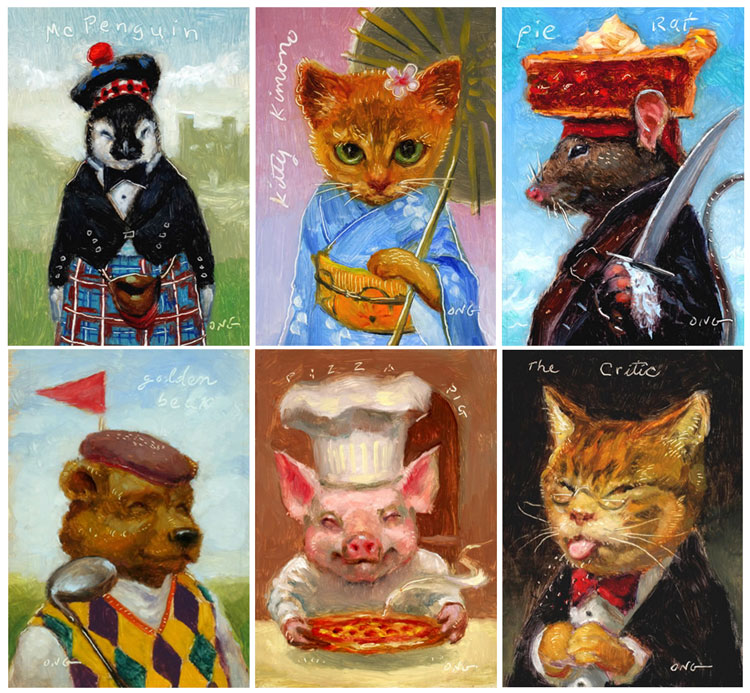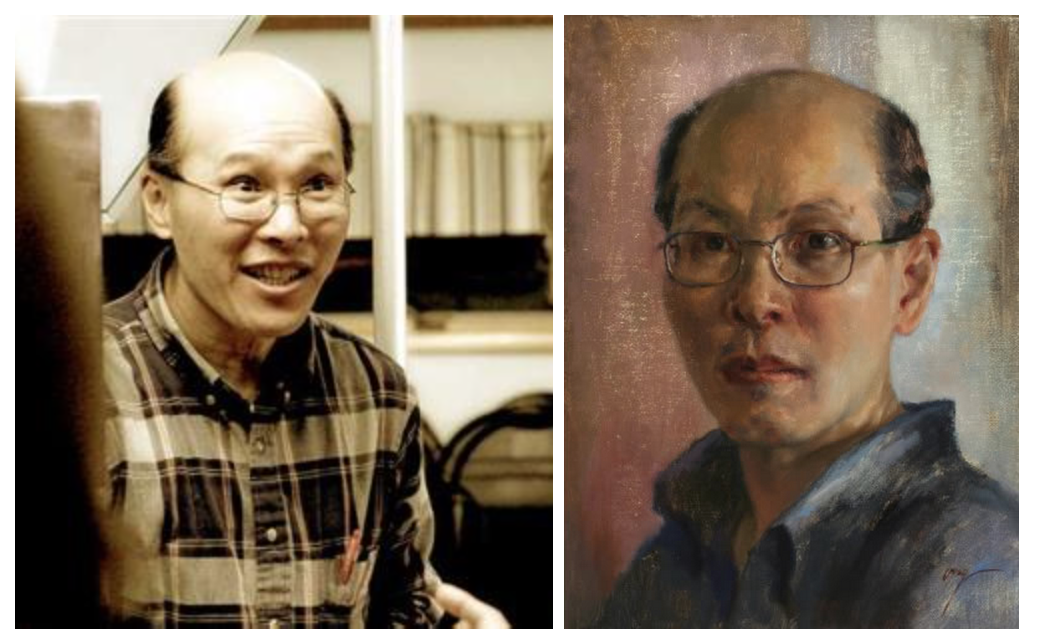Wilson Ong is a painter and teacher. He grew up in the Bay Area of California and received a BFA in painting and drawing from BYU. He furthered his studies at the Art Students’ League in New York City, NY. Wilson lives with his family in Corning, New York.
Describe yourself as an artist. I think that as an artist I can describe my approach as classical and academic. My interests within that spectrum have spanned from artists as Rembrandt, Norman Rockwell to divergent artists as Gustave Klimt. Recently, I’ve reviewed the work of Léon Augustin Lhermitte whom I have always enjoyed. Despite my interests, I don’t paint much like those masters, but I continue to learn from them. Museums are great and books are the next best teachers for me. I really do enjoy the figure and the portrait, however, I continue to explore the still life genre and landscapes. I’ve done a number of jobs that did not involve art, but being an artist has always given me the greatest challenge, the greatest personal sense of accomplishment, and ultimately a depressing amount of frustration and loneliness.
You once said, “I think painting is a privilege.” My parents are immigrants and “making it” in America consisted of a lot of hard work. I grew up working in the family restaurant, cleaning dishes, busing tables, food prepping (I’m decent with a knife). Of course as children we were required to do well in school (math was not bad, but English classes were a drag) and excel in college prep classes. During my youth, I often felt trapped and turned to drawing as a way to escape, plus it was always an enjoyable activity. Nevertheless, I was always reminded that my purpose was to work hard, get a good education and get a good job. Even though I say that, my parents did support my art in their own way. I don’t think they understood what I was about, but I was always allowed to purchase a modest amount of art materials when I needed to. Painting now is my medium of choice and I’ve had the opportunity to sell my work and support my family creating art for several years (it is not as romantic as it sounds). Of course in the back of my mind I’m prepared to flip burgers again (as well as doing the plethora of other jobs I’ve held in the past). I also know that there are others that would want a slice of what I have had or achieved, so I avoid being elitist when I speak of what I do.
You paint a lot of religious art. Talk about how you approach these pieces. That’s an interesting question, because I don’t think that my output of religious work is that significant. About five years ago I did paintings for a woman who was self-publishing a book titled “Portrait of a Woman and Jesus.” The bulk of my religious work is comprised in this group of paintings. This project was closely directed as she had a fairly specific vision of what she wanted. We worked well together and I was honored that she considered me an answer to her prayers. When creating these pieces and others, it is always important to know what the parameters are, that I need to work within. Personal connection is important to me so I do my best to empathize with the subject matter and imagine myself as a participant of the scene being painted. This may sound a bit sentimental, but I am careful to select the music and media I listen to or watch during the process. I think that the emotional content on the faces of the figures has always been an emphasis to me regardless of subject matter, so being keen to this is natural. Sketches are created and are approved, rejected, or adjusted. Depending on the complexity of the project, color studies are executed. The final paintings are then, again, approved, adjusted, and (unfortunately) sometimes rejected. The religious paintings that I have done for myself are a bit more difficult, because they are under the standard of my own personal vision and expectation, which may evolve and expand during the creation process. These paintings generally are started with a few rough sketches and resource materials with limited planning. There are quite a bit of changes in a process of this nature, yet in the end I find the journey with these projects much more satisfying than otherwise.
Explain your series of animal portraits. I think the explanation of these animal portraits are pretty self-evident. They are just fun and quirky. I’m able to take my classical training and apply them to a very non-serious subject matter. It would be comparable to exercising and eating healthy and then taking a break from it all to sit in front of the tube and pig out on junk food. I will do these from time to time as it allows me a release from doing my more serious work (wow that sounds so elitist). Personally, I enjoy doing them and I find myself tickled by the wit of each piece.
